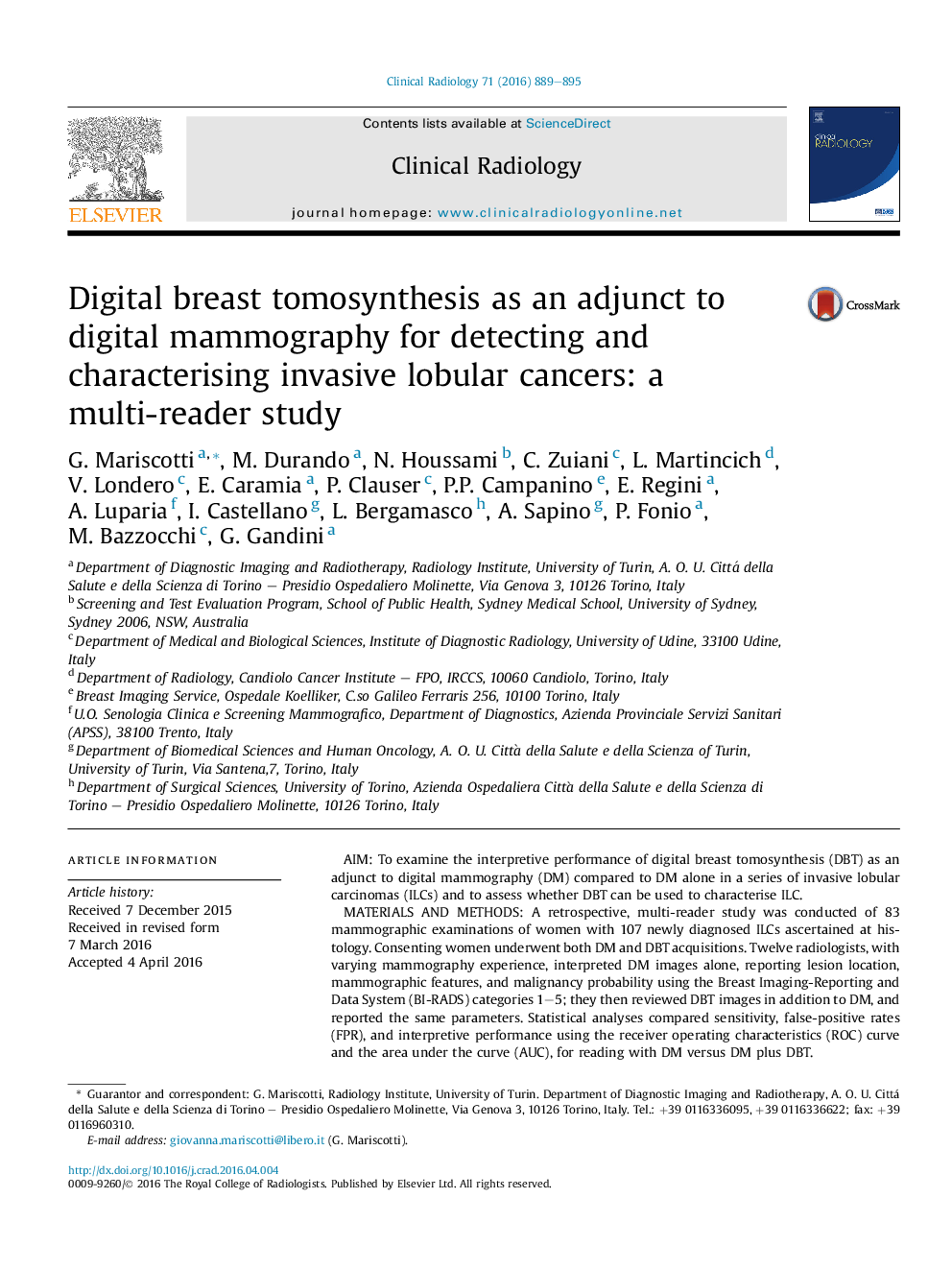| Article ID | Journal | Published Year | Pages | File Type |
|---|---|---|---|---|
| 3981138 | Clinical Radiology | 2016 | 7 Pages |
•DBT plus DM significantly improved accuracy of mammographic interpretation for ILCs.•DBT increased identification of ILCs depicted as architectural distortions or masses.•Larger gains in AUC were shown for less-experienced radiologists.•Adding DBT to DM contributed to characterizing disease extent.
AimTo examine the interpretive performance of digital breast tomosynthesis (DBT) as an adjunct to digital mammography (DM) compared to DM alone in a series of invasive lobular carcinomas (ILCs) and to assess whether DBT can be used to characterise ILC.Materials and methodsA retrospective, multi-reader study was conducted of 83 mammographic examinations of women with 107 newly diagnosed ILCs ascertained at histology. Consenting women underwent both DM and DBT acquisitions. Twelve radiologists, with varying mammography experience, interpreted DM images alone, reporting lesion location, mammographic features, and malignancy probability using the Breast Imaging-Reporting and Data System (BI-RADS) categories 1–5; they then reviewed DBT images in addition to DM, and reported the same parameters. Statistical analyses compared sensitivity, false-positive rates (FPR), and interpretive performance using the receiver operating characteristics (ROC) curve and the area under the curve (AUC), for reading with DM versus DM plus DBT.ResultsMulti-reader pooled ROC analysis for DM plus DBT yielded AUC=0.89 (95% confidence interval [CI]: 0.88–0.91), which was significantly higher (p<0.0001) than DM alone with AUC=0.84 (95% CI: 0.82–0.86). DBT plus DM significantly increased pooled sensitivity (85%) compared to DM alone (70%; p<0.0001). FPR did not vary significantly with the addition of DBT to DM. Interpreting with DBT (compared to DM alone) increased the correct identification of ILCs depicted as architectural distortions (84% versus 65%, respectively) or as masses (89% versus 70%), increasing interpretive performance for both experienced and less-experienced readers; larger gains in AUC were shown for less-experienced radiologists. Multifocal and/or multicentric and bilateral disease was more frequently identified on DM with DBT.ConclusionAdding DBT to DM significantly improved the accuracy of mammographic interpretation for ILCs and contributed to characterising disease extent.
